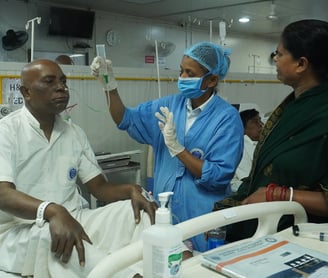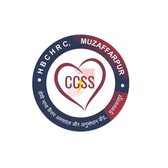Nasogastric Tube Feeding
AFTER SURGERY


The patient maybe discharged with a feeding-tube called a nasogastric tube, or Ryles tube. The NG tube is inserted through the patient’s nose and into his/her stomach to provide them with food, fluids, and medication. This maybe because the patient has difficulty swallowing safely or adequately.

1. Giving the Tube Feeding
Equipment Needed:
50 ml syringe
Prescribed liquid food from your doctor or dietitian
Clean steel glass
Clean food container
Instructions:
Wash your hands thoroughly before starting the feeding.
Sit your loved one in a chair or an upright position in bed (90 degrees) during the feeding and for 30 minutes afterward.
Important: Do not feed in a lying down position as this increases the risk of the food entering the lungs.Before beginning the feeding, ensure the stomach is empty by doing the following:
Insert the tip of an empty syringe into the end of the NG tube.
Pull back the plunger to withdraw the stomach contents (yellowish-greenish).
Do not start feeding if more than 100 ml remains from the previous feeding.
Remove the plunger from the syringe.
Pinch the tube with your fingers to clamp it.
Fill the syringe with 50 ml of liquid food. Ensure the formula is warm (not hot).
Open the clamp and allow the formula to flow into the NG tube.
Repeat the process until the required amount has been given (e.g., for 200 ml, repeat 4 times).
Finish the feeding by flushing the tube with 25-50 ml of plain warm water.
If choking or difficulty breathing occurs during the feeding, stop immediately and seek medical help if it recurs.
Aftercare:
Rinse the syringe after each feeding. Every 24 hours, wash it with soapy water and rinse thoroughly.
2. Giving Medications Through the NG Tube
Instructions:
Use the liquid form of the medication if available. If not, crush pills finely.
Flush the feeding tube with 30 ml of water before giving medication.
If using crushed pills, dissolve them in warm water (not hot) to avoid clogging the tube.
Draw the medication into the syringe and attach it to the NG tube. Push the plunger to administer the medication.
After giving medication, flush the tube with 30 ml of water.
Some medications may need to be given with food or on an empty stomach. Always follow your doctor's instructions.
3. Mouth and Tube Care
Mouth Care:
The patient should brush their teeth twice daily.
Clean the mouth using chlorhexidine and H2O2, as advised by the doctor.
Tube Care:
Clean the area where the NG tube enters the nose daily with a gauze piece moistened with warm water.
Change the nose tape every other day or whenever it becomes loose.
Ensure the nose tape is always secure. If the feeding tube falls out, do not reinsert it yourself—seek medical help immediately.
To prevent clogging, flush the tube with water after each feeding or medication.
If the tube becomes clogged:
Attach the syringe to the NG tube and pull back on the plunger.
Flush the tube with warm drinking water.
If the tube remains clogged, seek medical help right away to avoid missing any prescribed feedings, water, or medications.
4. What Not to Put Into the Tube
Semi-solid or solid food (e.g., rice, khichdi).
Hot liquids (e.g., soups, hot tea, hot milk).
5. When to Seek Medical Help
Seek medical assistance immediately if the patient experiences:
Repeated choking or difficulty breathing during a feeding.
A blocked tube.
A dislodged tube from the nose.
Diarrhea, constipation, nausea, or fever lasting more than a day.


